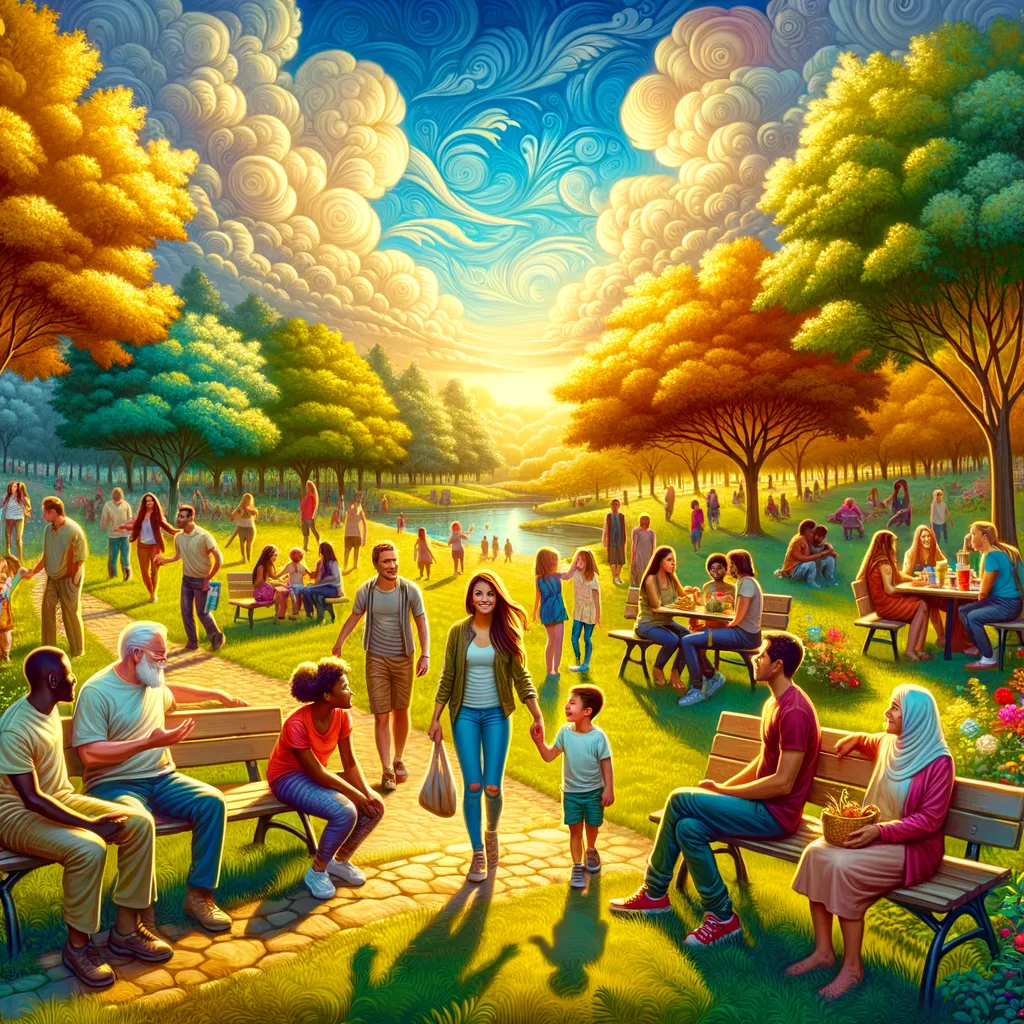Discovering Humanity: A Subway Encounter of Empathy
On a seemingly mundane day at a bustling subway platform, an encounter with a downcast woman transformed an ordinary moment into a profound revelation. As the train screeched to a halt, the narrator’s gaze lingered on her, igniting an unexpected connection that transcended the chaos around them. In that fleeting cocoon of shared silence, the weight of their individual struggles became a mirror, reflecting lost opportunities and unspoken fears. When the woman stood to leave, their eyes met in a silent acknowledgment of the shared tapestry of human experience, awakening a newfound purpose within the narrator. This moment of discovery sparked a journey toward empathy, where every interaction became a chance to embrace the complexities of others while learning to balance compassion with self-care, ultimately revealing the transformative power of understanding in a world filled with hidden battles.
In the memory of February 17, 2006, I found myself standing on a crowded subway platform, the air thick with the scent of damp concrete and the hum of distant conversations. It was an ordinary day that would soon unravel into something extraordinary. As I waited for the train, I noticed a woman sitting on a nearby bench, her eyes downcast, shadowed by the weight of invisible burdens. The world rushed past her, but in that moment, she became the still center of my universe, an anchor in the chaotic sea of daily life.
As the train screeched to a halt, I watched people jostle for space, their faces a tapestry of stories—some lined with joy, others etched with sorrow. I was struck by the realization that each person carried their own narrative, a complex interplay of triumphs and tragedies, hopes and fears. The woman on the bench, I mused, was no different. What pain lay behind her closed eyes? What dreams had been abandoned in the relentless pursuit of survival? I felt a sudden surge of empathy, a connection that transcended the boundaries of our individual experiences.
Moments later, I found myself sitting beside her, the hum of the train enveloping us in a shared cocoon. A simple glance ignited a spark of curiosity within me. What if, I wondered, I could see her struggles as vividly as my own? What if I could peel back the layers of her life, revealing the heartache and the hope that resided within? The thought startled me, shaking the very foundation of my understanding of forgiveness. Would my capacity to forgive others expand if I truly grasped their hardships?
As the train lurched forward, I felt a strange sense of kinship with the woman. I began to see reflections of my own pain in her downturned gaze—lost opportunities, moments of doubt, and the relentless march of time that carried us both forward, often against our will. The realization washed over me like a tidal wave, pushing me to confront the walls I had built around my heart. Each brick, a judgment; each stone, a grievance. What if I could dismantle them, brick by brick, until only compassion remained?
The train hurtled through tunnels, and with each passing second, I was reminded of the fragility of existence. In those fleeting moments, I glimpsed the universality of suffering. The man who had just entered, his face lined with worry; the teenager, earbuds in, lost in a world of their own; the elderly couple, holding hands tightly, as if their very lives depended on that simple act. I realized that life was a delicate balance of joy and sorrow, and perhaps it was this very balance that made forgiveness not just an act but a way of being.
Suddenly, the train lurched to a stop, and the woman beside me stood up, ready to exit. As she turned, our eyes met for the briefest of moments—a silent exchange that spoke volumes. In that instant, the world around us faded, and I understood that every life, including hers, was a tapestry woven from threads of joy and pain, laughter and tears. The realization felt like an awakening, a call to action that echoed deep within me.
As she walked away, I felt a sense of loss, but also a burgeoning sense of purpose. I resolved to carry this newfound awareness into the world beyond the subway. To confront my own grudges, to embrace the complexities of those around me, and to recognize the shared humanity that binds us all. Each interaction became an opportunity to practice empathy, to see beyond the surface, and to understand that forgiveness could be a bridge connecting our disparate lives.
In the days that followed, I found myself more attuned to the struggles of others. The barista who seemed perpetually overwhelmed, the co-worker who wore their stress like a shroud, the neighbor with a weary smile. Each encounter transformed into a chance to extend grace rather than judgment, to offer kindness instead of indifference. With every small act, I felt my heart open wider, like petals unfurling to the sun.
Yet, in this journey of discovery, I also grappled with the shadows that lingered. What happens when the pain feels insurmountable? When the weight of others’ struggles presses down upon you, threatening to crush your spirit? I learned that empathy must be balanced with self-care, that to forgive others, one must first forgive oneself. This was the delicate dance of humanity—a constant ebb and flow, a cycle of giving and receiving.
As I reflect on that day in February, I am left with a profound question: How might our lives change if we chose to see the world through the lens of compassion, understanding that every person we encounter is fighting their own battle, just as we are?
In the bustling chaos of life, the simple act of recognizing shared struggles can illuminate the profound connections that bind humanity together.



